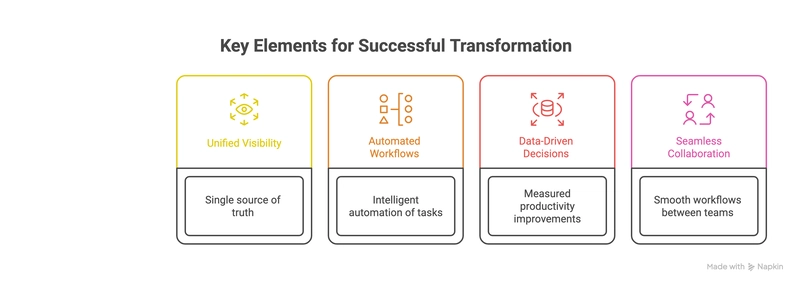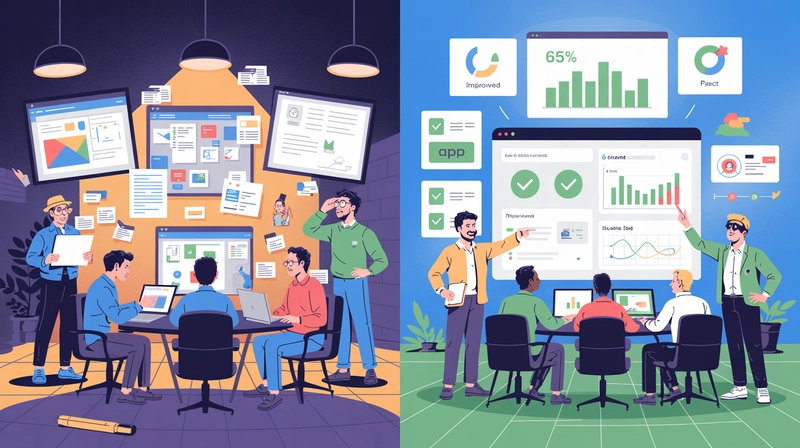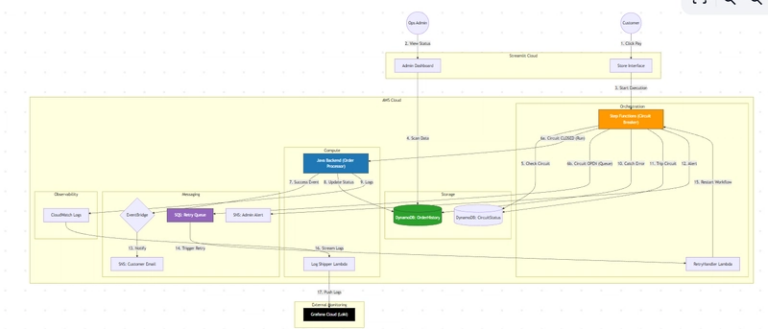The $2M Developer Productivity Crisis: How 5 IT Leaders Cut Wasted Time by 65%
Developer productivity is not just about writing cleaner code or shipping features faster – it’s becoming a multimillion-dollar crisis that’s bleeding tech companies dry. Recent industry analysis reveals that productivity bottlenecks cost the average enterprise $2 million annually through delayed releases, context switching penalties, and resource misallocation.
Yet, five forward-thinking IT leaders discovered actionable strategies that slashed wasted time by 65%, transforming their teams into productivity powerhouses.
The Hidden Cost of Developer Inefficiency

Before diving into solutions, understanding the scope matters. Developer productivity loss manifests through:
- Context switching penalties: Studies show developers lose 23 minutes of focus after each interruption
- Tool fragmentation: Teams using 10+ disconnected tools waste 2.5 hours daily on administrative overhead
- Poor project visibility: 67% of developers report uncertainty about project priorities and deadlines
- Technical debt accumulation: Rushed releases create maintenance burdens that compound exponentially
These inefficiencies compound across teams, creating cascading delays that impact entire product roadmaps.
Explore Productivity Calculator to Find Your Team Efficiency in Seconds!
Case Study 1: TechFlow Solutions – 70% Reduction in Meeting Overhead
- The Challenge: TechFlow’s 45-developer team spent 32% of their time in meetings, with unclear action items and duplicated discussions across multiple platforms.
- The Solution: Team Lead Sarah Chen implemented a structured workflow combining async communication with focused collaboration sessions.
Key changes included:
- Meeting audit: Eliminated 60% of recurring meetings by identifying overlapping discussions
- Async-first documentation: Critical decisions documented in shared spaces before synchronous discussions
- Time-boxed collaboration windows: Daily 30-minute focused sessions replaced scattered interruptions
💡
The Result: Meeting time dropped from 16 hours to 4.5 hours weekly per developer, freeing 11.5 hours for deep work.
Case Study 2: DataStream Corp – 58% Faster Feature Delivery
The Problem: DataStream’s distributed team struggled with project coordination, leading to missed deadlines and scope creep across six concurrent projects.
The Transformation: Engineering Manager Mike Rodriguez restructured their project management approach:
- Unified project dashboard: Single source of truth for all project statuses and dependencies
- Sprint retrospective automation: Weekly productivity metrics tracked automatically
- Resource allocation optimization: Visual workload management prevented developer burnout
💡
The Impact: Average feature delivery time decreased from 6.2 weeks to 2.6 weeks, with 40% fewer scope changes mid-sprint.
Case Study 3: CloudBridge Technologies – 72% Improvement in Code Quality Metrics
The Obstacle: CloudBridge faced technical debt accumulation due to rushed releases and inadequate code review processes.
The Strategy: CTO Lisa Wang implemented quality-focused productivity measures:
- Automated code quality gates: Pre-commit hooks prevented technical debt accumulation
- Peer review standardization: Structured review templates improved feedback quality
- Technical debt tracking: Dedicated sprint capacity allocated for refactoring work
💡
The Outcome: Bug reports dropped 72%, while deployment confidence increased significantly across teams.
Case Study 4: InnovateAI Labs – 65% Reduction in Tool Switching Time
The Issue: InnovateAI’s developers juggled 14 different tools daily, creating cognitive overhead and information silos.
The Approach: Platform Architect James Kim consolidated their toolchain:
- Tool integration audit: Identified redundant functionality across platforms
- Workflow automation: Connected disparate tools through API integrations
- Centralized notification system: Single dashboard for all project updates and alerts
💡
The Results: Daily tool switching time reduced from 3.2 hours to 1.1 hours per developer, dramatically improving focus time.
Case Study 5: ScaleTech Ventures – 80% Faster Onboarding Process
The Bottleneck: New developer onboarding took 8-12 weeks, creating productivity drains on existing team members.
The Solution: Head of Engineering Rachel Torres streamlined knowledge transfer:
- Automated environment setup: One-click development environment provisioning
- Interactive documentation: Step-by-step guides with embedded tutorials
- Mentorship tracking: Structured pairing sessions with progress metrics
💡
The Achievement: Onboarding time reduced to 2.5 weeks, with new hires contributing meaningful code 75% faster.
The Common Thread: Integrated Project Management

Each successful transformation shared critical elements that modern teams need:
1. Unified Visibility
Teams eliminated productivity losses by creating single sources of truth for project status, priorities, and deadlines. When everyone understands the big picture, context switching decreases dramatically.
2. Automated Workflows
Manual administrative tasks disappeared through intelligent automation. Routine updates, status reports, and progress tracking happened seamlessly in the background.
3. Data-Driven Decisions
Successful teams measured productivity improvements through concrete metrics rather than subjective assessments. They tracked time allocation, feature velocity, and quality indicators consistently.
4. Seamless Collaboration
Breaking down silos between team members, departments, and tools created smoother workflows. Information flowed naturally without manual intervention or duplicate efforts.
Implementing Your Own Productivity Transformation
Week 1-2: Audit Current State
- Track time allocation across different activities for baseline measurements
- Identify your team’s biggest productivity bottlenecks through developer surveys
- Map existing tool usage and identify redundancies or gaps
Week 3-4: Establish Unified Workflow
- Implement centralised project management with clear visibility into all ongoing work
- Create standardised processes for common tasks like code reviews and deployment
- Set up automated progress tracking and reporting mechanisms
Week 5-6: Optimise Communication Patterns
- Establish async-first communication protocols
- Schedule focused collaboration windows for complex discussions
- Implement notification management to reduce context switching
Week 7-8: Measure and Iterate
- Compare productivity metrics against baseline measurements
- Gather team feedback on workflow improvements
- Refine processes based on actual usage patterns and results
Measuring ROI: The Numbers That Matter
Productivity improvements translate directly into business value when measured correctly:
- Developer velocity: Features shipped per sprint, story points completed
- Quality metrics: Bug rates, deployment frequency, rollback percentages
- Time allocation: Deep work hours, meeting time, administrative overhead
- Team satisfaction: Developer experience scores, retention rates
Teams achieving 65% productivity improvements typically see:
- 40% faster feature delivery
- 50% reduction in technical debt accumulation
- 30% improvement in developer satisfaction scores
- 25% decrease in overall project costs
Streamlining Success with Modern Tools
The case studies demonstrate that productivity transformation requires more than good intentions; it demands the right technological foundation. Successful teams leverage integrated platforms that eliminate tool fragmentation while providing comprehensive project visibility.
Teamcamp exemplifies this approach by combining project management, team collaboration, and productivity analytics in one unified platform. Rather than forcing developers to juggle multiple disconnected tools, Teamcamp creates seamless workflows that naturally boost efficiency.
Key features that drive productivity improvements include:
- Real-time project dashboards that eliminate status meeting overhead
- Automated progress tracking that captures productivity metrics without manual intervention
- Integrated communication tools that keep context-sensitive discussions connected to relevant work
- Resource allocation optimisation that prevents burnout while maximising output
Explore Productivity Calculator to Find Your Team Efficiency in Seconds!
The Path Forward: From Crisis to Competitive Advantage
The $2 million developer productivity crisis isn’t inevitable—it’s solvable through strategic workflow optimisation and smart tooling choices. The five IT leaders profiled here prove that dramatic improvements are achievable when teams commit to systematic change.
Your transformation starts with an honest assessment of current productivity bottlenecks, followed by implementation of integrated solutions that eliminate friction rather than adding complexity. The 65% improvement benchmark isn’t just possible—it’s becoming the new standard for high-performing development teams.
Ready to calculate your team’s productivity improvement potential? Explore Teamcamp’s productivity calculator to quantify the ROI of streamlined project management and discover how modern teams are turning productivity crises into competitive advantages.
The question isn’t whether you can afford to optimize developer productivity—it’s whether you can afford not to.


